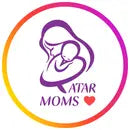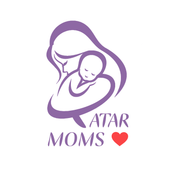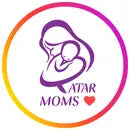Postpartum stitches, whether from a natural birth or a cesarean section, are common and can cause pain and discomfort for many mothers. Managing this phase correctly plays a key role in speeding up recovery so the mother can regain her strength and care for her newborn without exhaustion or discomfort.
In this article, we’ll explore the reasons for postpartum stitches, along with effective birth stitches, pain relief methods, practical tips, and recommended products to support you during this stage.
Reasons for Stitches After Delivery
1. Episiotomy (Perineal Cut)
In certain natural births, a doctor may perform an episiotomy — a surgical incision in the perineum — to facilitate delivery. This incision requires careful stitching to promote proper healing.
2. Cesarean Section
A cesarean section involves a surgical cut in the abdomen and uterus, followed by suturing. This type of wound demands special postpartum care during recovery.
3. Perineal Tears
Spontaneous tears in the perineum can occur during vaginal delivery. These tears must be stitched to restore tissue and ensure full recovery.
Effective Ways to Relieve Stitches Pain After Delivery
1. Get Enough Rest
Adequate rest is essential to reduce pain from stitches after normal delivery or cesarean birth. Avoid overexertion and prioritize sleep to help your body heal.
2. Use Cold Compresses
Cold packs help reduce swelling and soothe the pain, especially in the early days. You can use postpartum ice packs, like the ones available at Qatar Moms, designed for high performance and quick relief.
3. Keep the Wound Clean
Clean the stitches gently with warm water after every bathroom use, and dry carefully. Using a postpartum sitz bath from our store can enhance hygiene and comfort.
4. Take Doctor-Approved Pain Relievers
Pain in stitches after C-section delivery or vaginal birth can be reduced by safe medications such as paracetamol or ibuprofen, as advised by your doctor.
5. Choose the Right Sitting Position
Prolonged or incorrect sitting can increase pressure on the stitches. The best way to sit after giving birth is by using a postpartum donut cushion that evenly distributes weight and reduces pain in the stitched area.
6. Practice Gentle Exercises
Once approved by your doctor, light exercises like pelvic floor exercises (Kegels) can promote blood circulation and support healing.
7. Care for the C-Section Wound
If you had a C-section, clean the incision regularly and use a gentle wash to avoid irritation. Avoid tight clothing that may rub against the stitches. Signs that your cesarean or episiotomy wound is healing include reduced redness, dryness, and less swelling.
When to Contact Your Doctor ?
Seek medical attention immediately if you experience any of the following:
- High fever
- Increased or unusual pain
- Abnormal discharge from the wound
Regular follow-ups with your gynecologist are important to ensure proper healing and to prevent any potential complications.
Questions About the Recovery Phase
1. Does Prolonged Sitting Affect Stitches After Childbirth?
Yes, sitting for extended periods without proper support can put excessive pressure on postpartum stitches, especially in the perineal area, which may lead to increased discomfort and potentially slow down the healing process. It is important to avoid prolonged sitting and to ensure you maintain good posture to support recovery.
2. What Is the Correct Sitting Position After Giving Birth?
Using a donut-shaped postpartum cushion is highly recommended. This cushion helps to evenly distribute your body weight, relieving pressure on the sensitive stitches and reducing pain and discomfort in the perineal region. Sitting gently and avoiding hard or uneven surfaces can also aid in faster healing.
3. What’s the Best Cream for Stitches After Natural Birth?
The best creams for healing postpartum stitches are those medically approved and formulated with anti-inflammatory and soothing ingredients. These creams help reduce inflammation, promote tissue repair, and alleviate pain. Qatar Moms provides a selection of trusted postpartum healing creams designed to support your recovery safely and effectively.
4. Why Do Internal Stitches Hurt After 40 Days?
Persistent pain in internal stitches after 40 days may indicate ongoing inflammation or slower-than-expected tissue healing. It could also be due to other complications that require medical attention. If you experience prolonged or unusual pain, it is crucial to consult your healthcare provider promptly for a thorough examination and appropriate care.
If you have any concerns about your stitches or recovery, always seek advice from your doctor to ensure the best care for your health and well-being
Remember, after normal delivery stitches pain relief depends on rest, hygiene, and the right products. Browse our full collection of Postpartum Care for Mom at Qatar Moms — including Maternity Pads , C Section Recovery Essentails and Postpartum Belts — all high quality and affordably priced.
 FREE DELIVERY FOR ORDERS ABOVE 100 QAR
FREE DELIVERY FOR ORDERS ABOVE 100 QAR DELIVERY WITHIN 3 HOURS
DELIVERY WITHIN 3 HOURS APPLE PAY AND CARD PAYMENT AVAILABLE
APPLE PAY AND CARD PAYMENT AVAILABLE



